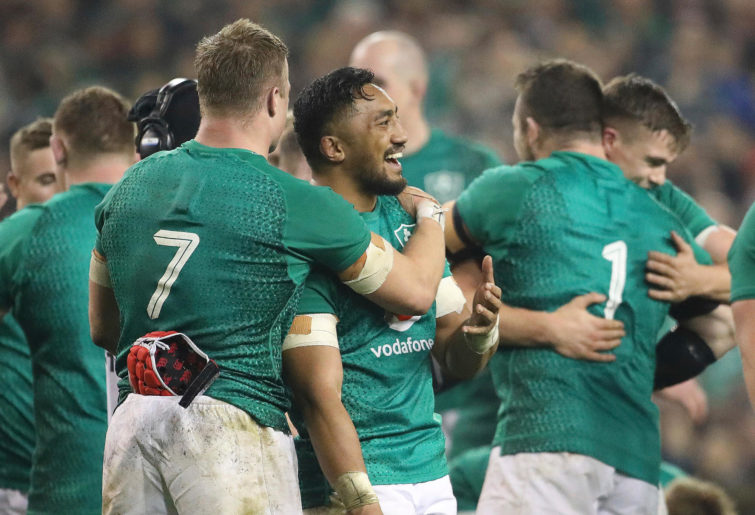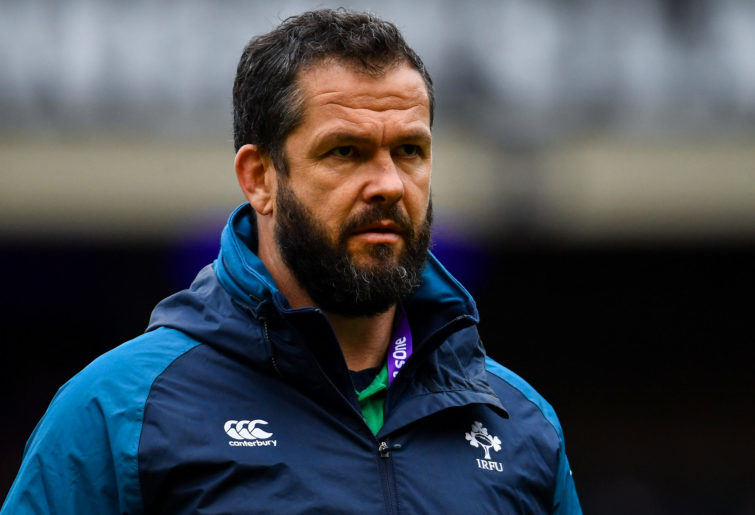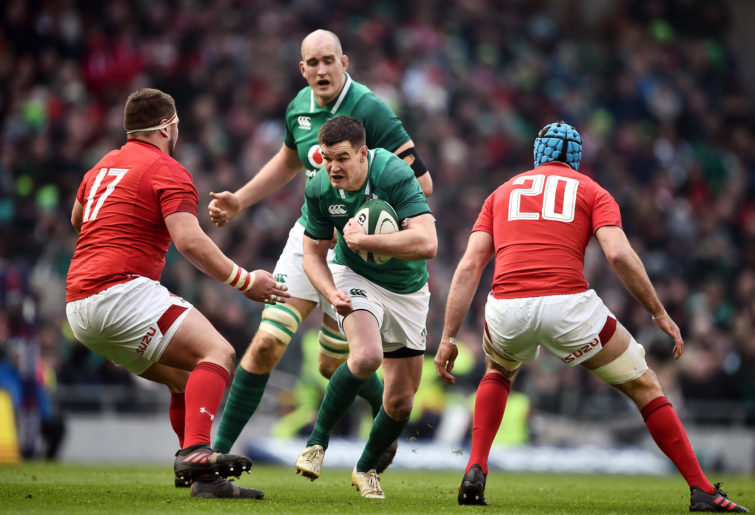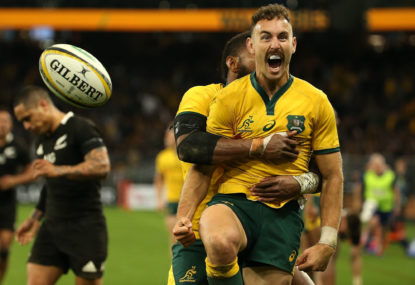Ireland may be as surprised as anyone to be heading into the 2019 World Cup as world number one after a see-sawing couple of months on the leaderboard. It doesn’t make them favourites, though.
Despite a hammering at the hands of England only a few weeks ago, Ireland are still huge contenders coming into the World Cup, having won six of their nine Tests this year, with a Six Nations Grand Slam campaign last year and two wins against the All Blacks from their last three meetings fueling their form and confidence leading into what has traditionally been a luckless tournament for the Irish.
The Squad
Ireland World Cup squad
Forwards
Rory Best (c), Tadhg Beirne, Jack Conan, Sean Cronin, Tadhg Furlong, Cian Healy, Dave Kilcoyne, Iain Henderson, Jean Kleyn, Peter O’Mahony, Andrew Porter, Rhys Ruddock, James Ryan, John Ryan, Niall Scannell, CJ Stander, Josh van der Flier
Backs
Bundee Aki, Joey Carbery, Jack Carty, Andrew Conway, Keith Earls, Chris Farrell, Robbie Henshaw, Rob Kearney, Jordan Larmour, Luke McGrath, Conor Murray, Garry Ringrose, Jonathan Sexton, Jacob Stockdale
The Irish will be led by veteran Ulster hooker Rory Best, taking part in his fourth World Cup at 37 years of age.
Coach Joe Schmidt has named an experienced lineup for the tournament, with six other players having participated in at least two previous World Cups and a further five who made an appearance in 2015. There are no debutants in the squad as Schmidt looks to lean on experience to drive his side deep into the tournament.
The most notable omission from the squad is second-rower Devin Toner, who Schmidt ran out of patience with over the past 12 months, bringing the 33-year-old’s Test career into question as he makes way for Jean Kleyn.

Strengths
Ireland have a potent attacking lineup and a top-class backline. While they’ve found a lot of success this year in tighter spaces, delivering short and sharp ball to squeeze through small overlaps and gaps in the defence, they’re actually one of the most dangerous broken play threats in world rugby at the moment.
You only have to look at some of their recent warm-ups Tests, and even back to the Six Nations where they were able to counter-attack successfully off the back of opposition errors or open field kicking.
This is especially so out wide on the wing, where their quicker outside backs have enjoyed great success in reacting and pouncing on loose ball or a scrambled defence.
Another underrated asset of Ireland’s success this year has come from their rolling maul, an area they haven’t exactly been synonymous with throughout their history. They tore apart a hapless French pack earlier in the year off the back of the maul and, if they can utilise it in the same fashion in Japan, they have the potential to catch a lot of sides out.
Weaknesses
For the most part, Ireland have managed to keep their own try-line relatively clear from conceding a mountain of points. However, one game should have every other team licking their lips, not to mention making every Irish fan concerned.
When England piled eight tries on the men in green at Twickenham in a devastating 57-15 demolition, they were found out in a big way and were lucky Wales weren’t able to pick them apart in the same manner over their next two Tests.
If any side coming up against Ireland are looking to prepare, they need to analyse the weaknesses that reared their heads in this contest.
Set piece defence is one. Credit is due to the way England executed their plays, but Ireland’s defensive efforts at lineout and scrum time were alarming, frequently being picked off for incorrect positioning, wrong numbers in the case of defending sides of the scrum and just straight up poor reading of decoy runners and back-play movements from the wrapping players.
Their midfield was caught flat-footed in the middle of the backline, opening up their outside and leaving the back three with too much to work against. They’ll need to find a way to cover those gaps coming off the scrum, in particular, and on the spreading ball off the lineout when they don’t have the benefit of numbers to lean on.
In more open play, they were picked apart on the left edge, but the right didn’t get much reprieve either as again, they were just getting their timing, placement and reads wrong against an attacking outfit that had their backline firing on all cylinders.
It cropped up here and there throughout the Six Nations earlier in the year to a lesser extent but, when they’ve been found out, they’ve been getting rolled in those areas and have been lucky not to suffer similar fates against other sides.

Ireland defence coach Andy Farrell has some work to do. (Photo By Ramsey Cardy/Sportsfile via Getty Images)
Key Player: Johnny Sexton
This might seem like an obvious one but for good reason. As an elder statesman in the side, Sexton is a vital cog in the Irish machine as a leader of the group and an experienced head who can control and manipulate the game.
He’s also a huge factor in the aforementioned strengths and weaknesses.
The quick-passing tactic in close to the line starts with the flyhalf and Sexton has been a masterful commander of this strategy, racking up try assists throughout the last two years from taking on the line and laying off on the inside or out to draw in the defence and create more space than you could poke a stick at.
His biggest impact could be in the defensive line though. Many of the issues from their set-piece woes stem from players being stuck on the back foot and having to cover space on the inside of the line. Sexton needs to be able to read those movements and keep the defensive line moving with the play. If they cut back in, he needs to be there to shut that gate as well.
So much of that problem comes from error of judgement, something Sexton, who didn’t play against England, is key in controlling on his outside with his younger outside backs.
Now aged 34, Sexton is a man Ireland will be placing much of their hope on as one of world rugby’s top stars of the last decade. He has the potential to be the player of the tournament.

(Photo by Charles McQuillan/Getty Images)
Verdict: Top of the pool into a southern hemisphere blockade
It would take something out of left field for anyone in Pool A to deny Ireland’s near-certain chance at topping it. They have arguably the easiest pool of any side in the Cup and a very favourable path to the quarter-finals.
That’s where their luck is likely to run out though.
The two teams they could potentially run into for the quarter-final are New Zealand or South Africa. Possibly the two best sides in Japan.
All Blacks will always be considered the team to beat in this situation, and the Springboks have emerged as one of the form teams of the year, running undefeated throughout 2019 and peaking at just the right time for the tournament.
Ireland have the potential to cause a stir in the finals and can make it all the way to the big dance if they can get past the first knockout hurdle – something the side has never managed. Assuming the pools run true to form, their quarter-final against South Africa looms as a pseudo-semi final, with the winner likely to make the final.
Unfortunately for Ireland, we have Joe Schmidt’s men falling in the final eight once again.
Prediction: Quarter-finals
Pool A
Pool B
Pool C
Pool D
Scotland
Argentina
Australia
Ireland
Wales
England
South Africa
New Zealand
































































































